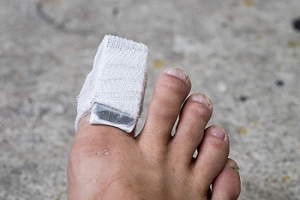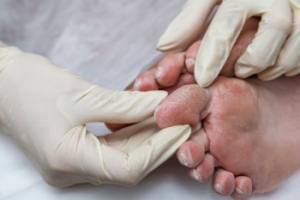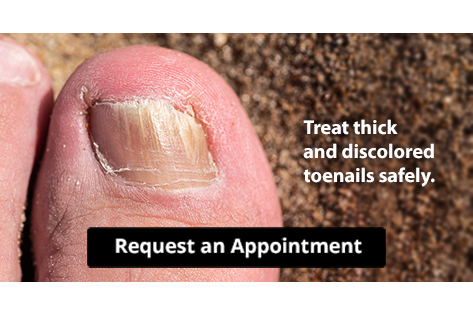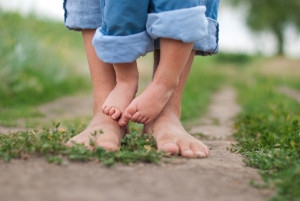
Choosing the Right Running Shoes for Every Type of Run

Selecting the appropriate running shoes is critical for enhancing performance and preventing injuries. For road running, lightweight shoes with ample cushioning and support are ideal to handle the repetitive impact on hard surfaces. Trail running requires shoes with rugged outsoles and enhanced grip to navigate uneven terrain and provide stability. For those focused on speed and competition, racing flats offer a lightweight design that maximizes speed and responsiveness. Cross-training shoes are versatile, offering stability and support for various workouts, including running on multiple surfaces. Minimalist shoes, designed to mimic barefoot running, promote natural foot movement and can strengthen foot muscles over time. Each type of shoe caters to specific needs and running conditions, making it essential to choose the right pair for your running style and goals. If you have endured a foot injury from wearing the wrong type of shoes, it is suggested that you visit a podiatrist who can offer you relief options, in addition to discussing what type of shoes best fit your running needs.
If you are a runner, wearing the right running shoe is essential. For more information, contact Daniel Mendoza, DPM from Nashville Podiatry. Our doctor can provide the care you need to keep you pain-free and on your feet.
Choosing the Right Running Shoe for Your Foot Type
To increase performance and avoid the risk of injury, it is important to choose the right running shoe based on your foot type. The general design of running shoes revolves around pronation, which is how the ankle rolls from outside to inside when the foot strikes the ground.
- Neutral runners are able to choose from a wide variety of shoes, including minimalist shoes or even going barefoot.
- Runners who overpronate, or experience an over-abundance of ankle rolling, should choose shoes that provide extra motion control and stability.
- Runners who underpronate, or supinate, have feet that have high arches and lack flexibility, preventing shock absorption. They require shoes with more flexibility and cushion.
If you have any questions please feel free to contact our office located in Hendersonville, TN . We offer the newest diagnostic and treatment technologies for all your foot and ankle needs.
Choosing the Right Running Shoe for Your Foot Type
Running may seem like a simple to do. However, running is actually a complex movement that puts stress on the ligaments, bones, and joints of the body. Selecting the correct running shoe is important for increasing performance and avoiding risk of injury. Running shoes should be selected based on your foot type. Considerations such as trail versus road shoes are important. Your foot type dictates the degree of cushioning, stability and motion control you require. The most accurate way to learn your foot type is to visit a local shop that specializes in running shoes. Professionals can measure your arch type, stride and gait and help you with your shoe needs.
The design of running shoes is created around the idea of pronation. Pronation is the natural rolling movement of your ankle from the outside to inside when your foot strikes the ground. If you run properly you strike the ground on the outside of your heel and roll in the direction of your big toe before pushing off once more. Pronation is beneficial because it assists the lower half of your body in absorbing shock and storing energy. Those considered neutral runners pronate correctly and do not need running shoes that help correct their form. Neutral runners can choose from a wide variety of shoes, including barefoot or minimal types. However, those who have arch problems or who adopt an incorrect form while running may experience too much or too little pronation. They may require running shoes that offer additional support.
Those who overpronate experience an over-abundance of ankle rolling. Even while standing, those who severely overpronate display ankles that are angled inward. It is not uncommon for them to have flat feet or curved legs. The tendency to overpronate may cause many injuries. Areas that tend to become injured are the knees, ankles, and Achilles tendon. If you find that you have a tendency to overpronate, you should look at shoes that provide extra stability and motion-control. Motion-control shoes are straight and firm. Shoes of this type do not curve at the tip. The restricted flexibility along the middle of the shoe prohibits the foot from rolling too far inward as your foot strikes the ground.
A less common problem is underpronation. Underpronation, also called supination, is when the feet are unable to roll inward during landing. Those who underpronate have feet that lack flexibility and high arches. This prevents any kind of shock absorption, even though it does place less rotational stress on ankles and knees. This added force can cause fractures, ligament tears, and muscle strains because the legs are trying to compensate for the impact. Those who underpronate need shoes with more cushioning and flexibility. If you have a tendency to underpronate, selecting stability or motion-control shoes may cause you more problems by continuing to prevent pronation.
When Custom Orthotics Can Help
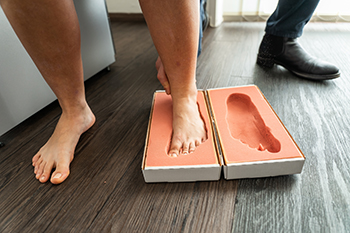 Custom orthotics are specially designed shoe inserts that provide support and relief for various foot-related conditions. Signs that you might need custom orthotics include persistent foot pain, abnormal foot structure, or issues with gait and posture. These inserts can help with conditions like plantar fasciitis, flat feet, high arches, bunions, and arthritis by providing better alignment and pressure distribution. Walking without proper support can lead to significant pain, affecting your overall mobility and quality of life. The three main types of custom orthotics are soft, rigid, and semi-rigid. Soft orthotics are made from cushioned materials, offering relief for arthritis and diabetes by providing maximum shock absorption. Rigid orthotics, crafted from harder materials like plastic or carbon fiber, are designed to control motion and are often used to treat pain in the legs, thighs, and lower back. Semi-rigid orthotics combine elements of both, offering support and flexibility, making them suitable for athletes and active individuals. If you are experiencing ongoing foot pain or discomfort, it is suggested that you schedule an appointment with a podiatrist to determine if custom orthotics are right for you.
Custom orthotics are specially designed shoe inserts that provide support and relief for various foot-related conditions. Signs that you might need custom orthotics include persistent foot pain, abnormal foot structure, or issues with gait and posture. These inserts can help with conditions like plantar fasciitis, flat feet, high arches, bunions, and arthritis by providing better alignment and pressure distribution. Walking without proper support can lead to significant pain, affecting your overall mobility and quality of life. The three main types of custom orthotics are soft, rigid, and semi-rigid. Soft orthotics are made from cushioned materials, offering relief for arthritis and diabetes by providing maximum shock absorption. Rigid orthotics, crafted from harder materials like plastic or carbon fiber, are designed to control motion and are often used to treat pain in the legs, thighs, and lower back. Semi-rigid orthotics combine elements of both, offering support and flexibility, making them suitable for athletes and active individuals. If you are experiencing ongoing foot pain or discomfort, it is suggested that you schedule an appointment with a podiatrist to determine if custom orthotics are right for you.
Custom orthotics and shoe inserts are not just for cushioning the soles; they are about supporting the foundation of our body - our feet. The advantages extend far beyond immediate relief from discomfort. These personalized solutions, that Our doctor can prescribe, can significantly impact a person’s posture, alleviate pain in various parts of the body, and even enhance athletic performance.
As we lace up our shoes each day, having the right support can make a world of difference. Custom orthotics are like tailored suites for our feet, offering a bespoke solution to address our unique biomechanical needs. They provide stability where it is lacking, correct imbalances, and ensure that every step is a confident and pain-free one.
Custom orthotics and shoe inserts offer long-term health benefits. By addressing issues such as overpronation or underpronation, heel pain, plantar fasciitis, etc. orthotics can help prevent injuries and mitigate the progression of existing conditions. It’s an investment not just in the present, but in the future health of your feet and consequently, your overall well-being.
If you have any questions please contact our office located in Hendersonville, TN . We offer the newest diagnostic and treatment technologies for all your foot and ankle needs.
Investing in Custom Orthotics Means Investing in Foot Health
Custom orthotics offer a tailored approach to foot health, providing a host of benefits that extend far beyond conventional shoe inserts. One of the primary advantages lies in their ability to address specific biomechanical issues. Unlike off-the-shelf inserts, custom orthotics are crafted based on an individual's unique foot structure, gait, and any existing foot conditions.
The personalized design of custom orthotics ensures optimal support for the arches, promoting proper alignment and distributing pressure evenly across the feet. This can be particularly beneficial for individuals dealing with issues such as overpronation or underpronation, as custom orthotics help correct imbalances that may lead to discomfort or injury.
Beyond biomechanics, custom orthotics can alleviate a range of foot problems, including plantar fasciitis, bunions, and metatarsalgia. They provide targeted relief to areas under stress, reducing pain and inflammation. Additionally, for those with specific medical conditions like diabetes, custom orthotics can play a crucial role in preventing complications associated with poor foot health.
Comfort is another key aspect of custom orthotics. By accommodating the unique contours of an individual's feet, these inserts enhance overall comfort, making daily activities more enjoyable. Whether for athletes looking to optimize performance or individuals seeking relief from chronic foot pain, custom orthotics offer a versatile solution.
Investing in custom orthotics is an investment in long-term foot health. They not only provide immediate relief but also contribute to the prevention of future issues. With the ability to seamlessly integrate into various types of footwear, custom orthotics empower individuals to prioritize foot comfort without compromising on style. In essence, custom orthotics are a personalized prescription for happy, healthy, and pain-free feet.
What Can Be Done About Broken Toes
 Toe fractures can occur due to various reasons, such as stubbing, dropping heavy objects, or even sports injuries. The impact can cause the toe bone to break, leading to pain, swelling, and difficulty in walking. Individuals may experience tenderness, bruising, and sometimes even a visible deformity depending on the severity of the fracture. To evaluate toe fractures, podiatrists may perform physical examinations and order X-rays to determine the type and severity of the break. Treatment options range from simple rest and elevation to immobilization using splints, buddy taping, or wearing a special shoe. In severe cases or for fractures that involve displaced bones, surgery may be necessary to realign and stabilize the bones. If you have a broken toe, it is suggested that you schedule an appointment with a podiatrist for treatment to facilitate optimal healing and prevent complications.
Toe fractures can occur due to various reasons, such as stubbing, dropping heavy objects, or even sports injuries. The impact can cause the toe bone to break, leading to pain, swelling, and difficulty in walking. Individuals may experience tenderness, bruising, and sometimes even a visible deformity depending on the severity of the fracture. To evaluate toe fractures, podiatrists may perform physical examinations and order X-rays to determine the type and severity of the break. Treatment options range from simple rest and elevation to immobilization using splints, buddy taping, or wearing a special shoe. In severe cases or for fractures that involve displaced bones, surgery may be necessary to realign and stabilize the bones. If you have a broken toe, it is suggested that you schedule an appointment with a podiatrist for treatment to facilitate optimal healing and prevent complications.
A broken toe can be very painful and lead to complications if not properly fixed. If you have any concerns about your feet, contact Daniel Mendoza, DPM from Nashville Podiatry. Our doctor will treat your foot and ankle needs.
What to Know About a Broken Toe
Although most people try to avoid foot trauma such as banging, stubbing, or dropping heavy objects on their feet, the unfortunate fact is that it is a common occurrence. Given the fact that toes are positioned in front of the feet, they typically sustain the brunt of such trauma. When trauma occurs to a toe, the result can be a painful break (fracture).
Symptoms of a Broken Toe
- Throbbing pain
- Swelling
- Bruising on the skin and toenail
- The inability to move the toe
- Toe appears crooked or disfigured
- Tingling or numbness in the toe
Generally, it is best to stay off of the injured toe with the affected foot elevated.
Severe toe fractures may be treated with a splint, cast, and in some cases, minor surgery. Due to its position and the pressure it endures with daily activity, future complications can occur if the big toe is not properly treated.
If you have any questions please feel free to contact our office located in Hendersonville, TN . We offer the newest diagnostic and treatment technologies for all your foot and ankle needs.
What to Know About a Broken Toe
Trauma to the foot, especially the toes, can occur in many ways. Banging them, stubbing them, or dropping something on them are a few different ways this trauma can occur. Given the fact that toes are positioned in front of the feet, they typically sustain the brunt of such trauma. When trauma occurs to a toe, the result can be a painful break or fracture. Another type of trauma that can break a toe is repeated activity that places stress on the toe for prolonged periods of time.
Broken toes can be categorized as either minor or severe fractures. Symptoms of minor toe fractures include throbbing pain, swelling, bruising on the skin and toenail, and the inability to move the toe with ease. Severe toe fractures require medical attention and are indicated when the broken toe appears crooked or disfigured, when there is tingling or numbness in the toe, or when there is an open, bleeding wound present on the toe.
Generally, a minor toe break will heal without long-term complications. However, it is important to discontinue activities that put pressure on the toe. It is best to stay off of the injured toe and immediately get a splint or cast to prevent any more additional movement of the toe bones. You can also immobilize your toe by placing a small cotton ball between the injured toe and the toe beside it. Then, tape the two toes together with medical tape. Swelling can be alleviated by placing an ice pack on the broken toe directly as well as elevating your feet above your head.
Severe toe fractures may be treated with a splint, cast, and in some cases, minor surgery, especially when the big toe has been broken. Due to its position and the pressure the big toe endures with daily activity, future complications can occur if it is not properly treated. Pain associated with minor toe fractures can be managed with over-the-counter pain medications. Prescription pain killers may be necessary for severe toe fractures.
The healing time for a broken toe is approximately four to six weeks. In severe cases where the toe becomes infected or requires surgery, healing time can take up to eight weeks or more. While complications associated with a broken toe are immediately apparent, it is important to note that there are rare cases when additional complications, such as osteoarthritis, can develop over time. You should immediately speak with your podiatrist if you think you have broken your toe due to trauma. They will be able to diagnose the injury and recommend the appropriate treatment options.
The Importance of Proper Diabetic Foot Care
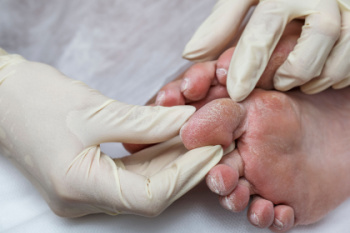
Effective foot care is important, especially for individuals managing diabetes, as the condition increases the risk of various foot complications. Maintaining optimal foot health involves several essential practices tailored to diabetic needs. Regular foot inspections, conducted daily, help identify any signs of injury, redness, or changes in skin condition. Keeping feet clean and dry, particularly between the toes, prevents moisture-related infections. Moisturizing with a gentle lotion helps prevent dry skin and cracks. Wearing properly fitting shoes and socks, preferably made of breathable materials, minimizes friction and reduces the risk of blisters or sores. Additionally, avoiding walking barefoot and practicing caution when trimming nails are vital to prevent cuts or infections. Finally, scheduling regular foot exams with a podiatrist ensures early detection and management of any foot-related complications. If you have diabetes, it is strongly suggested that you are under the care of this type of doctor who can help you to manage this serious condition.
Diabetic foot care is important in preventing foot ailments such as ulcers. If you are suffering from diabetes or have any other concerns about your feet, contact Daniel Mendoza, DPM from Nashville Podiatry. Our doctor can provide the care you need to keep you pain-free and on your feet.
Diabetic Foot Care
Diabetes affects millions of people every year. The condition can damage blood vessels in many parts of the body, especially the feet. Because of this, taking care of your feet is essential if you have diabetes, and having a podiatrist help monitor your foot health is highly recommended.
The Importance of Caring for Your Feet
- Routinely inspect your feet for bruises or sores.
- Wear socks that fit your feet comfortably.
- Wear comfortable shoes that provide adequate support.
Patients with diabetes should have their doctor monitor their blood levels, as blood sugar levels play such a huge role in diabetic care. Monitoring these levels on a regular basis is highly advised.
It is always best to inform your healthcare professional of any concerns you may have regarding your feet, especially for diabetic patients. Early treatment and routine foot examinations are keys to maintaining proper health, especially because severe complications can arise if proper treatment is not applied.
If you have any questions please feel free to contact our office located in Hendersonville, TN . We offer the newest diagnostic and treatment technologies for all your foot and ankle needs.
How to Care for Diabetic Foot
Millions of people are affected by diabetes each year. Diabetes damages blood vessels in all parts of the body, especially the feet. The legs and feet may develop slow blood flow, which causes neuropathy, or nerve damage. Once a diabetic patient develops neuropathy, it is important that the feet are well taken care of. Otherwise, the lower limbs may have to be amputated. This only happens in drastic cases, but it shows how seriously diabetic foot care should be taken.
It is very important to always wash and dry the feet thoroughly, especially in between the toes, if you’re a diabetic. Secondly, examining your feet and toes for redness or sores must be done, even if you do not feel pain. You may also want to examine your feet from the bottom. Try to avoid wearing colored socks to prevent infections that may occur from the dye. Well-fitting socks are also highly recommended.
A diabetic’s physician should always monitor their blood levels to test how well blood sugars are being maintained. In addition to giving advice about everyday eating habits and foot care, a physician may prescribe medicine to help with the diabetic patient’s neuropathy. It is also advised to see a podiatrist if experiencing any feet conditions. Toenails may also need to be taken care of by a podiatrist. This prevents patients from cutting too deeply around their cuticles, which can lead to infection.
A person can take care of their feet at home by following the instructions of their physician. Using creams on one’s feet is also an effective way to heal dryness. Proceed with caution when using tools to remove calluses, as severe diabetics may not be able to feel pain on their feet. If any complications arise do not hesitate to contact a podiatrist.
On a daily basis, diabetic feet must be checked. If you are ever concerned about something, contact your health care professional. You never want to wait until a wound becomes too severe to treat. If left untreated, gangrene may develop. Gangrene is a serious infection that can lead to sepsis or amputation. It is also important for diabetics to be on the lookout for ulcers. Ulcers are sores that develop from tissue loss on the skin. They can be quite painful and require intensive treatment. Early treatment and everyday inspection are imperative to staying healthy.
Children's Feet From Pre-Crawling to School Age
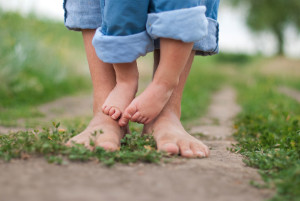
Children's feet undergo remarkable changes and developments as they progress through various stages of infancy and early childhood. In the pre-crawling stage, babies' feet are flexible and mostly fat pads, allowing them to kick and wiggle freely. As they transition to crawling, their feet adapt to bearing weight, developing arches and strengthening muscles necessary for mobility. Throughout the toddler years, a child's feet continue to evolve, with walking and running becoming primary modes of transportation. During this stage, proper footwear becomes vital to support their growing feet and provide stability. By the time children enter kindergarten and beyond, their feet have typically developed arches, and they exhibit more refined coordination and balance. As they engage in more physical activities and sports, maintaining foot health through wearing well-fitted shoes, regular exercise, and proper hygiene becomes essential. If you have any questions about the development of your child’s feet or what type of shoes to purchase, it is suggested that you consult a podiatrist who can address them.
Making sure that your children maintain good foot health is very important as they grow. If you have any questions, contact Daniel Mendoza, DPM of Nashville Podiatry. Our doctor can provide the care you need to keep you pain-free and on your feet.
Keeping Children's Feet Healthy
Having healthy feet during childhood can help prevent medical problems later in life, namely in the back and legs. As children grow, their feet require different types of care. Here are some things to consider...
Although babies do not walk yet, it is still very important to take care of their feet.
Avoid putting tight shoes or socks on his or her feet.
Allow the baby to stretch and kick his or her feet to feel comfortable.
As a toddler, kids are now on the move and begin to develop differently. At this age, toddlers are getting a feel for walking, so don’t be alarmed if your toddler is unsteady or ‘walks funny’.
As your child gets older, it is important to teach them how to take care of their feet.
Show them proper hygiene to prevent infections such as fungus.
Be watchful for any pain or injury.
Have all injuries checked by a doctor as soon as possible.
Comfortable, protective shoes should always be worn, especially at play.
If you have any questions please feel free to contact our office located in Hendersonville, TN . We offer the newest diagnostic and treatment technologies for all your foot and ankle needs.


